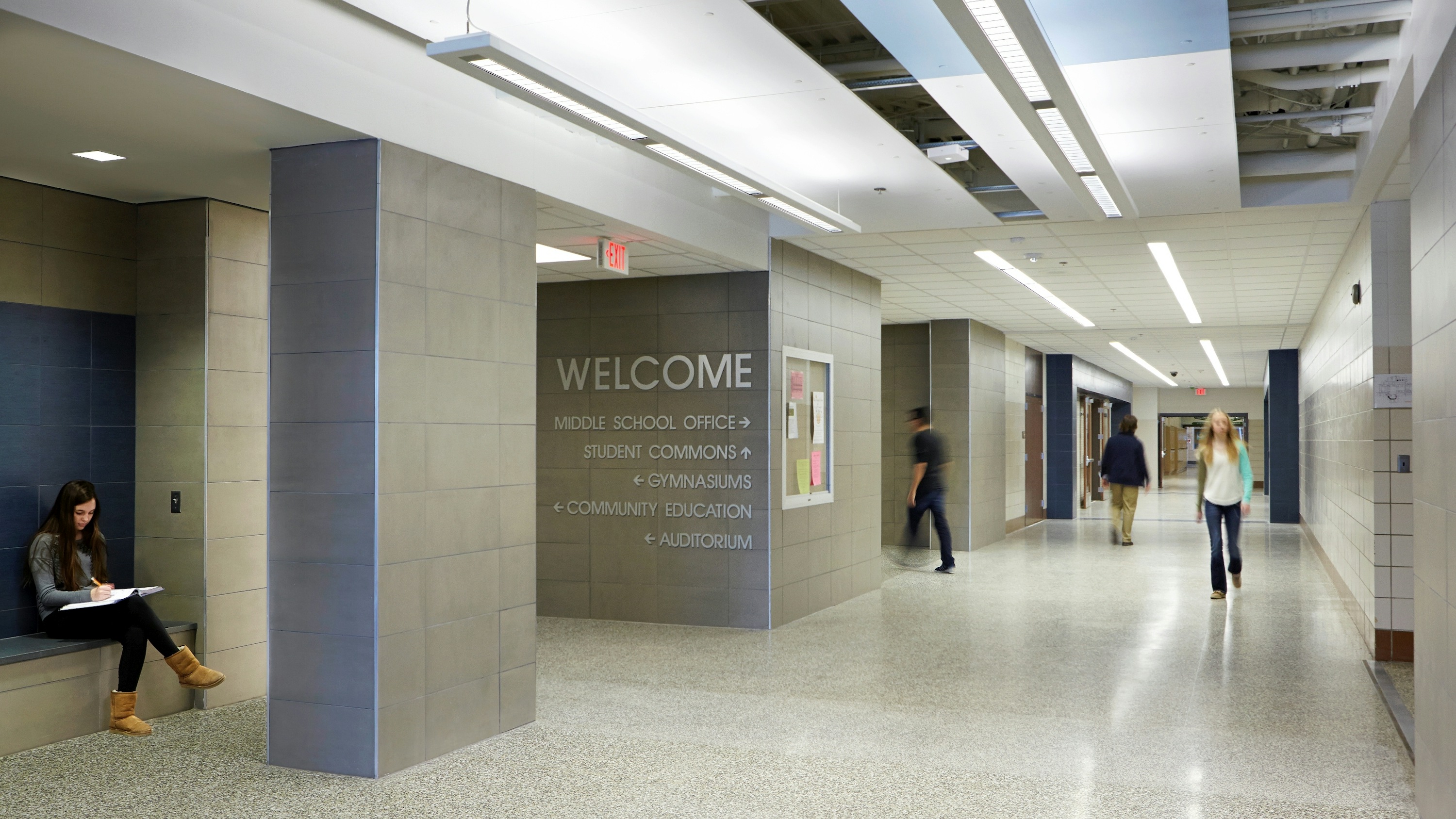
Specialized glass to slow down a shooter. Panic buzzers. Electronic locks and high-tech cameras.
Enhanced security features have become an urgent priority for Minnesota schools coping with the threat of mass shootings in their buildings.
On Wednesday, Orono schools were locked down for hours after police learned of threats on social media that a shooting would happen at noon. Police arrested and charged one unarmed student.
The Orono lockdown happened just a week after a school shooting in Florida claimed 17 lives. In response to it and others nationally, a growing number of Minnesota school districts are investing in new ways to design school buildings to make them safer for students and staff members. School leaders say they’re constantly learning from new mass shootings and adapting to evolving safety concerns.
“Everything we do, we’re trying to study one step ahead of the bad guys,” said Rick Kaufman, executive director of community relations and emergency management coordinator for Bloomington Public Schools. He was among the first on the scene to render aid to victims after the Columbine High School shooting in 1999.
That tragedy, along with shootings closer to home at Rocori High School in Cold Spring, Minn., and at Red Lake High School, have prompted districts to adopt a national standard for building design known as Crime Prevention Through Environmental Design (CPTED). The approach seeks to deter crimes by designing safer buildings, inside and out.
Wold Architects and Engineers in St. Paul works with 50 school districts around Minnesota and is now using CPTED elements in its designs to improve security. Paul Aplikowski, an architect and partner at Wold, said his team works with first responders, parents and school safety officials to develop a management plan supported by the structure of a building.
Features like expanded cameras and wired doors have also become universal. These types of surveillance features, Aplikowski says, make it easier for first responders and school officials to monitor what’s happening inside schools from the outside.
Many districts also have created secure vestibules — a single main entrance that abuts the administration offices to better screen visitors.
Most new security upgrades are hidden so as not to tip off intruders, Kaufman said. Bloomington Public Schools spends $1 million annually on building safety upgrades.
Anoka-Hennepin, the state’s largest school district, is devoting $133 million over the next four years to make its schools more secure. The district is preparing to demolish 62 portable classrooms and will replace them with additions connected to the main building. In addition, two new elementary schools will be constructed, featuring the latest security upgrades.
At Coon Rapids High School, the district’s oldest building, the main entrance will be moved near the administration offices, and the academic wing will be separated from the fieldhouse and the auditorium to restrict access to classrooms.
To prevent what occurred in 2012 at Sandy Hook Elementary in Connecticut — an intruder shot through a window to enter the school — school districts like Anoka-Hennepin and Bloomington school districts have added treated glass. Experts say the specialized glass is not bulletproof, but it holds up better than regular glass. It can take up to 12 minutes to breech, which is enough time to get first responders on the scene.
Also becoming more common: wired doors that send an alarm if they’re propped open. These upgraded doors can be checked with security cameras. Administrators can then decide whether they want to lock down. School districts are also installing keyless doors, allowing first responders to rush in with an access card.
Many school districts, including Bloomington, have installed emergency alarm systems within arm’s reach for office staff.
Gary Lee, deputy executive director of the Minnesota School Boards Association, said individual school boards are toying with the idea of situating armed resource officers at all their schools. Meanwhile, Osseo school board Chairman Robert Gerhart this week proposed placing armed volunteers in schools to keep students safe.
But experts say building reinforcements alone do not guarantee safety and can create a prisonlike environment.
“It would not be hard to turn a school into a very enclosed bunker,” Aplikowski said. “The No. 1 question schools need to wrestle with is how much they want to educate kids in that very closed environment.”
Randy Johnson, director of the Minnesota School Safety Center, helps school districts strike that balance by helping create more secure and welcoming access controls. During his walk-throughs, he touts positive school culture and urges schools to display posters encouraging good behavior. For the exterior, he recommends good signage, visible marquees and enhanced lighting for better visibility.
But now, Johnson says, school districts yearn to learn about swifter evacuation tactics that involve reuniting students with their families much quicker in a crisis.
Kaufman said schools’ safety strategy should also include training, drills, prevention and intervention plans.
For example, Anoka-Hennepin has enlisted the help of a local chapter of Sandy Hook Promise, a nonprofit that helps school officials detect the signs of socially isolated students. Other districts like Osseo have adopted new training approaches such as the ALICE — alert, lockdown, inform, counter and evacuate — method.
“We’re all hooked together on this issue,” said Jim Skelly, spokesman for the Anoka-Hennepin School District. “Nobody wins by doing better than anybody else; we all have to do it well.”
Read the full article from the Star Tribune in the Winona Daily News here.